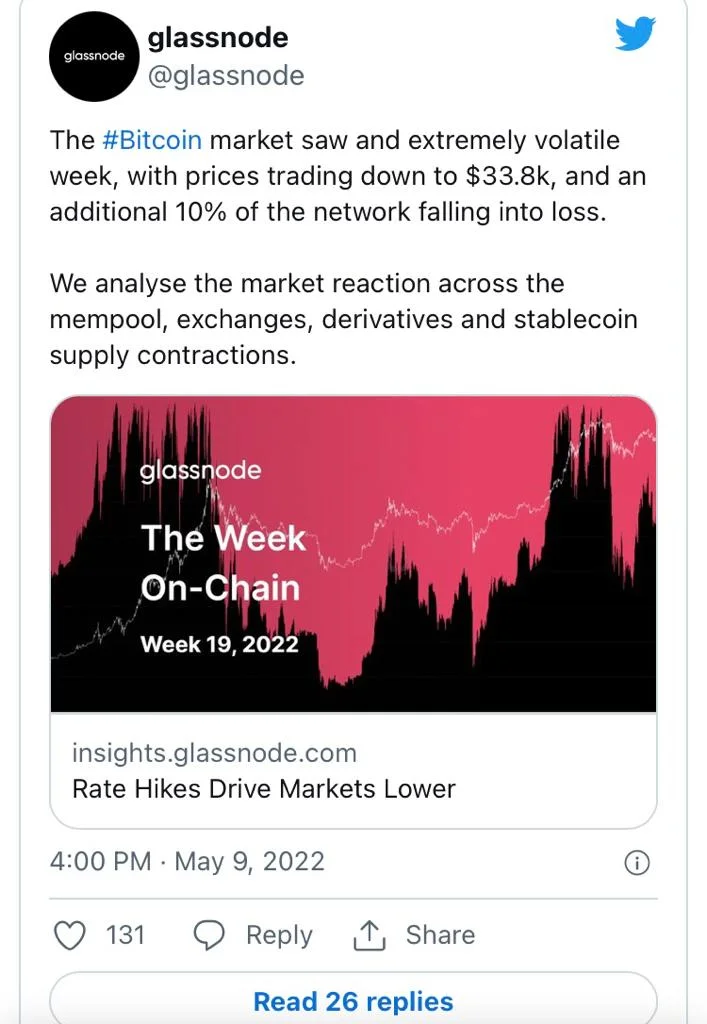According to the most recent report from Glassnode, investors are urgently sending Bitcoin into exchanges to de-risk their portfolios or protect margin positions with more collateral.

The number of transactions on the Bitcoin network has increased over the last week, which blockchain analysis firm Glassnode attributes to investors de-risking.
Last week, a surge of 42,800 transactions flooded the Bitcoin (BTC) mempool. Because of the high fees paid per transaction, Glassnode’s chief analyst believes these were “urgent” transactions. According to bitinfocharts, and on-chain data tracker, the average fee increased to $2.72 last week, about 15% higher than the typical average. On May 9, the findings were published in the Glassnode “Week On-chain” report.

On a blockchain network, the mempool is where transactions are sent before being confirmed in a block. The greater the fee paid on a transaction, the more likely it will be chosen ahead of others.
According to Glassnode, investors paid higher-than-average fees to prioritize their bids to de-risk their portfolios or add collateral to their margin positions, as the price of Bitcoin has fallen 19% in the last seven days. Just over 15% of on-chain transaction fees were correlated with exchange deposit rates, and these were only higher in May 2021, during another period of heavy sell-offs.

Bitcoin inflows to exchanges outpaced outflows for the majority of 2022, but that changed last week, with inflows exceeding outflows by more than $50 million. According to Glassnode, the total amount of exchange-related volume was only surpassed in October and November of last year, and it matched the peak of the 2017 bull market in late December and early January of this year.
Since the middle of April, BTC accumulation has been on a downward trend, according to Glassnode. Through the past week, “Shrimps,” or wallets holding less than an entire Bitcoin, were the largest accumulators of any cohort of wallets up to whales, but even their accumulative strength was weak compared to previous months this year.
Those in the highest cohort with at least 10,000 coins were the largest distributors or sellers. According to Glassnode, distribution has been higher than accumulation for the majority of 2022; however, the largest accumulators have been those holding less than one BTC and up to ten BTC.

With total fees spent at a local high as investors rush to exit more volatile positions, it appears that Bitcoin markets will continue on their “rocky road” to capitulation.
